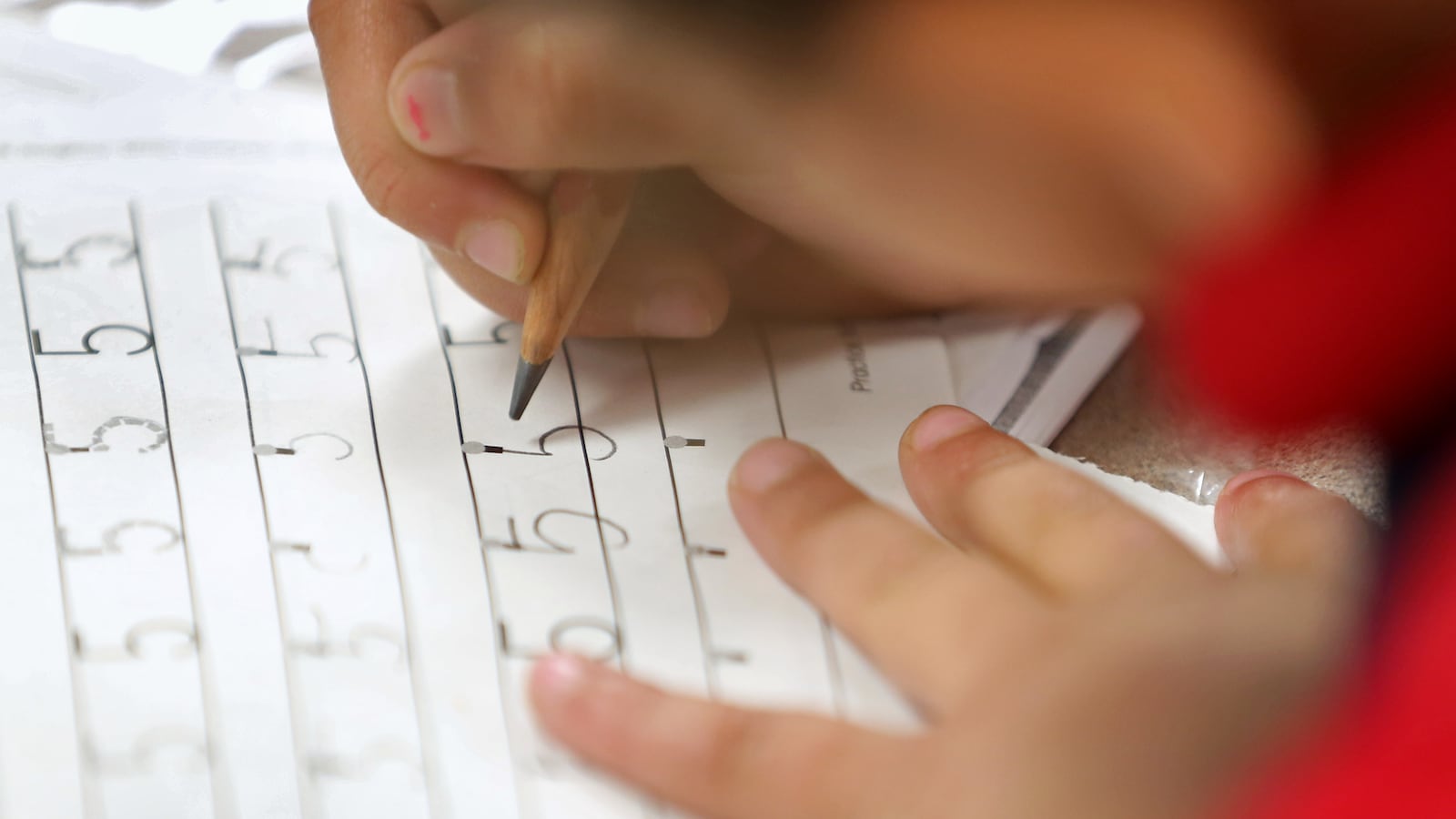
Every morning, I hand my fourth-grade students dry-erase markers and ask them to do something unconventional: write directly on their desks.
Their task is to write a goal for the day. I have seen them write things like “Today I will be a better friend” or more abstract ideas like “My goal is to accept challenges.” When it’s time to leave, we celebrate those who met their goals and encourage those who haven’t to try again tomorrow.
Daily goal-setting is one of many strategies I use to teach perseverance, self-control, confidence and teamwork — “soft skills” often referred to as social-emotional learning. Most require just a couple of extra minutes at the start and end of our school days, but the payoff seems invaluable.
Research shows that students who internalize those skills may actually be better at learning hard skills like math and reading, and are more likely to graduate from high school. One study showed that students were more motivated when they were told their brains are muscles that can get stronger with practice, just like any other muscle. This year, I’ve already seen students use their daily goal-setting to focus on tasks they used to think they could not accomplish, like multiplication.
I’ve seen this strategy work with students of all ability levels. We are a diverse community, and the same goals don’t work for everyone, especially my students who fall under the special-education umbrella or whose primary language isn’t English. But that doesn’t mean they are excluded. Part of the learning process for students is crafting their own goals that will work for them.
Another part of this exercise is practicing compassion. Nothing makes my heart happier than seeing my students take a genuine interest in each other. They’ve even written goals like, “I want to learn to speak English” (with help from another classmate) or “I will help Alan with his math today.” And they actually did it. Those two students sat together in class and worked on sight words and multiplication problems.
An important part of this work is defining these ideas, like empathy, grit and determination for students so I can be specific about what we’re aiming for. (I like ClassDojo’s Big Ideas videos, which explain those concepts through the eyes of a little monster named Mojo, and prompt my students to talk about how they’ve felt when they didn’t know an answer or were intimidated by a task.)
An unexpected benefit of these lessons has been personal. Lately, my class has been struggling with getting off-task — and, as all teachers know, every minute I spend asking a student to please stop talking or stop distracting others is a minute not spent on academic content or teaching the rest of the class. At one of those moments, I asked my students to empathize with me, one teacher trying to reach 22 of them, and with their fellow students, who wanted to learn but were being distracted.
We talked as a class about building a new set of expectations for our classroom. And by the end of the day, I had received two hand-delivered notes, secretly created and signed by each student in the class, saying that they were sorry for disturbing class.
The notes showed me that my students are learning compassion and also that they are beginning to value their academic time. I hope that it was a sign of soft skills leading to hard skills — students recognizing that how they act has an impact on learning the skills necessary to solve problems and succeed.
Stephanie Smith is a fourth-grade teacher at Roy L. Waldron Elementary School in La Vergne, Tenn.
About our First Person series:
First Person is where Chalkbeat features personal essays by educators, students, parents, and others trying to improve public education. Read our submission guidelines here.

